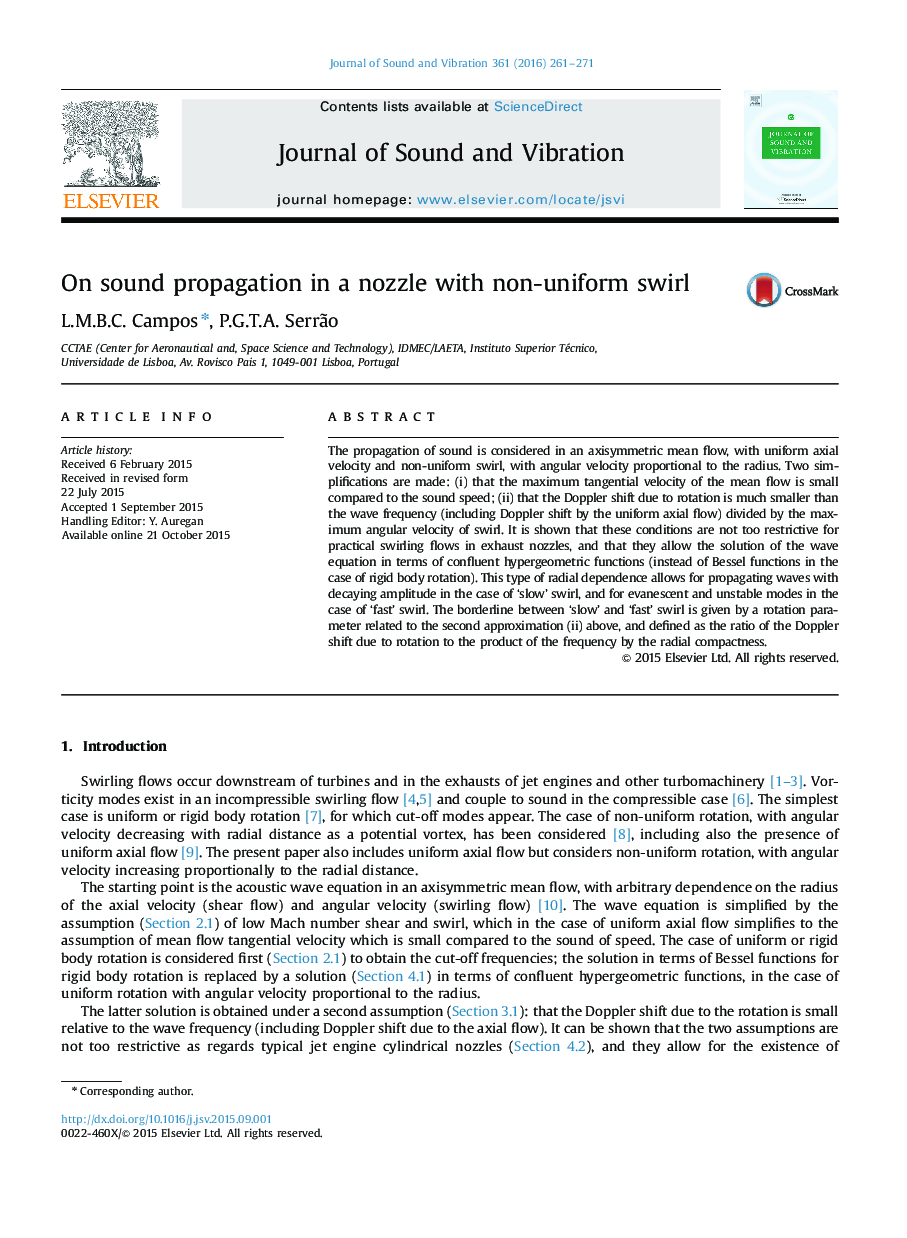| Article ID | Journal | Published Year | Pages | File Type |
|---|---|---|---|---|
| 287168 | Journal of Sound and Vibration | 2016 | 11 Pages |
The propagation of sound is considered in an axisymmetric mean flow, with uniform axial velocity and non-uniform swirl, with angular velocity proportional to the radius. Two simplifications are made: (i) that the maximum tangential velocity of the mean flow is small compared to the sound speed; (ii) that the Doppler shift due to rotation is much smaller than the wave frequency (including Doppler shift by the uniform axial flow) divided by the maximum angular velocity of swirl. It is shown that these conditions are not too restrictive for practical swirling flows in exhaust nozzles, and that they allow the solution of the wave equation in terms of confluent hypergeometric functions (instead of Bessel functions in the case of rigid body rotation). This type of radial dependence allows for propagating waves with decaying amplitude in the case of ‘slow’ swirl, and for evanescent and unstable modes in the case of ‘fast’ swirl. The borderline between ‘slow’ and ‘fast’ swirl is given by a rotation parameter related to the second approximation (ii) above, and defined as the ratio of the Doppler shift due to rotation to the product of the frequency by the radial compactness.
